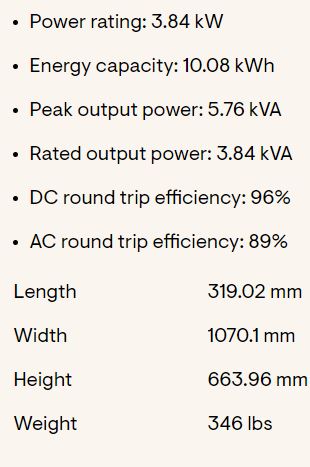The new era of the power grid may be characterized not by large power plants and sprawling transmission lines, but by local, flexible energy sources. Such is the vision explained in venture capitalist Bill Nussey’s Freeing Energy, which envisions billion-dollar opportunities for innovators that can reconceive how energy is created, stored, and delivered. This new concept of the grid is already underway, and the latest example is the collaboration between Vermont utility Green Mountain Power, and microinverter and energy storage provider Enphase.
The two announced that Green Mountain Power will offer Enphase batteries at a significant discount in a pilot lease program. In the pilot, Enphase will provide 100 eligible customers with two Enphase IQ Battery 10 units for $65 per month for ten years, or for a single payment of $6,500. That cost does not include installation. Enrolled homeowners benefit from reliable backup power, while also sharing stored energy during times of high demand to help reduce overall costs for all GMP customers.
“This new battery backup leasing program makes getting an Enphase Energy System with its exceptional IQ Batteries an even easier decision for Vermont homeowners. With the new IQ8 microinverters, our customers will be able to easily expand their home battery system over time, giving them even more peace of mind about their energy future. This partnership allows the homeowners, local contractors, and utilities to use Enphase’s state of the art technology to help create a more reliable, affordable, and cleaner grid for all of Vermont.” Liam Madden, director of solar energy at HB Energy Solutions.

Image: Enphase
The Enphase batteries are lithium ferro-phosphate (LFP) chemistry batteries, which the company said provide a long life cycle and improved safety through thermal stability. They are equipped with a feature to seamlessly power up air conditioners and well pumps in the event of a grid power loss. The batteries come with a ten-year limited warranty with the ability to extend by an additional five years.
Green Mountain Power has another existing virtual power plant offering, the Bring Your Own Device (BYOD) program. Under BYOD, upfront payments of up to $9,500 are offered depending on the capacity of the systems enrolled. Green Mountain Power said homeowners that retrofit an existing solar system in one of the areas of the state where battery power is needed most may be eligible to receive an extra $100 per kilowatt. Program participants will be enrolled for a term of a minimum of ten years.
Enphase is also launching its Grid Services Manager, a distributed energy resource management system (DERMS) that Green Mountain Power will use to manage the virtual power plants. Enphase said it plans to offer this software for utility grid managers and distributed energy resource aggregators in the future, playing a role in the new decentralized grid.
This content is protected by copyright and may not be reused. If you want to cooperate with us and would like to reuse some of our content, please contact: editors@pv-magazine.com.









Storage batteries are expensive so it makes most economical sense to use up all the charging life cycles like 1500 times or things like that instead of underusing them.. Some batteries have 5000 time cycles or more.. if one use only a few hundred timecycles over the lifetime of storage batteries then it is a waste of money. I am seeing solar generators with storage batteries going at around $800 per 1kwh storage and I wonder if those solar generators can be retrofitted to allow owners to sell back to make maximum uses of the lithium in the battery! The best and cheapest way to store is your EV which is the lowest cost battery around.. They are looking at our EVs , too.
By 2030, or sooner, solar parking lot canopies, with integrated V2G-EV chargers & stationary battery banks at typical suburban leased commercial centers like neighborhood shopping centers, business parks & large apartment buildings will become the hubs of 1 to 2 mile radius, ubiquitous, “pro-sumer” micro grids, due to the relatively high electrical energy demand & requirements for reliable backup power. Presently, there’s zero incentive for commercial building owners to install rooftop solar or any such energy efficient capital improvements, because tenants pay the utility bills. When new EV sales reach ~25% market share, existing commercial property owners will begin to feel market pressure from tenants. Even sooner, new commercial buildings will have these amenities, required by local building ordinance or state building code, because existing tenants will need chargers for their company vehicles & employees. They’ll be telling existing landlords, “No chargers, No lease. You need to upgrade your facilities.” It will become as necessary as providing ADA code compliant toilet rooms, etc. Some owner occupied properties, like Target, are already doing this, but it’s EV market penetration that’s going to “drive” it into the existing leased building market.